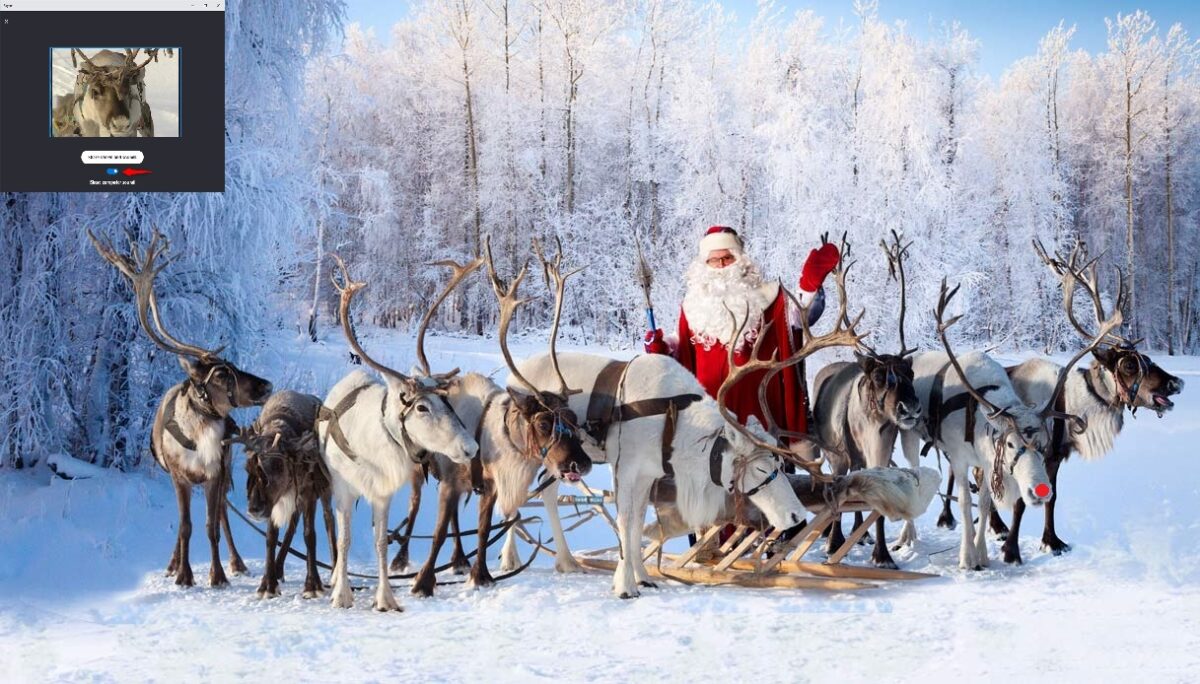
LEADER & INFLUENCER IN SANTA’S SLEIGH
The “Santa’s Sleigh” is a metaphor of a corporate work group.
In companies, there are always working groups. They are made up of individuals, with extremely different professionalism and characteristics, united by the achievement of a goal, otherwise not achievable individually.
The dynamics of growth and development of the working groups, studied since the 1960s, are summarized in the following five main phases:
- Forming : the individuals of the group orient themselves, get to know each other, interact and, through trust and the sharing of values, they create a group identity and identify a leader;
- Storming: the individuals develop a certain hostility towards others and/or towards the leader, particularly when there is a lack of clarity in directives and internal organizational support;
- Norming: the individuals arrive at a mutual acceptance and they develop shared rules;
- Performing: the members carry out their work, without hindering each other and having clear the objectives set and common to the group;
- Adjourning: the group, once the work has been completed, decides to suspend the activities to evaluate the results obtained and any improvements and evolutions.
Logically the relational and affective characteristics of individuals significantly affect the duration, the quality of work and the degree of effectiveness and efficiency of the activities carried out by the group in every phase.
However every group needs a leader, chosen or imposed. The leader’s job is to guide and to be responsible for the activities and results of the group. Leadership styles have been studied since the middle of the last century and they are currently summarized in these two main trends:
- Instrumental leadership: the leader pays all the attention and concern on the achievement of objectives, favoring the performance of the group and sacrificing the quality of relations between members. Commands, rules and hierarchies are the tools usually used;
- Socio-emotional leadership: the leader gives priority to the good working harmony of the group, trying to optimize performance. The tools usually used are support, listening, requesting opinions and advice and easing internal tensions.
A modern leader chooses, on a case-by-case basis, the leadership style that best suits the solution of the problem and the type of objectives set for the group.
Recently, an American study of network analysis in the workplace highlighted the presence of intermediate figures within groups, called, with a term derived from fashion, “influencers”. These individuals exert some influence on the other members of the group and they can become multiplying factors in the transmission of useful messages for the leader and for the group. Experts have identified four different categories of influencers:
- Mayor: he is an individual with a lot of friendships, both inside and outside the group, and therefore he can help support new ideas, as he will be able to offer them to a large number of listeners;
- Energizer: he is an individual who always transmits positivity and energy. He can be a fundamental part in managing change or in achieving maximum group performance;
- Bridge: he is an individual who eases tensions, files conflicts and smoothes out the disagreements between individuals and/or groups, in the logic of collaborating better;
- De-Energizer: he is an individual who reduces the group’s enthusiasm, with negative attitudes and creating unnecessary contrasts.
A good leader must be able to identify the influencers of the group, the influencer type and to apply a different strategy for each of them. For example, it could be useful to involve the Mayors on new initiatives (particularly those involving people outside the group’s organization), to use the Energizers (in times of difficulty or the group’s performance decline), to involve the Bridges (to overcome internal conflicts and tensions with other groups), to silence or attract the De-Energizers (to prevent them from tireing the group with complaints, controversies and conflicts).
Now, we can return to our metaphor of “Santa’s Sleigh”, where the leader (both instrumental and socio-emotional) is definitely Santa Claus, while the influencer, with Energizer characteristics, is Rudolph, the red and bright nosed reindeer leader, pointing the way and cheering on the other reindeer. However, all members of the group contribute to the difficult task of transporting and delivering all Christmas gifts, within a very short time, without errors and within budget (Amazon style).
The attentive reader will have noticed that the reindeer in the photo are fewer than those usually provided for pulling Santa’s sleigh (usually 9), but, at the time of the photo shoot, a reindeer was unfortunately in work from home (but present in videocall).
To conclude, regardless of the position covered within own work group, ACTION ICT offers, without distinction to Everyone, the best WISHES FOR A MERRY CHRISTMAS AND A PROFITABLE NEW YEAR.
ACTION ICT (December 2020)
ACTION ICT is a young, dynamic and innovative IT company. It operates, both nationally and internationally, offering professional skills and design solutions in the ICT field to medium and large businesses. Our highly skilled know-how is housed in three expertise specific departments: ACTION DATA (Big Data Analytics and Artificial Intelligence), ACTION APP (Web & Mobile Application) and ACTION IOT (Internet of Things and Robotics).
Keep in touch
Latest
-
 Stage Mirror Approach…
Stage Mirror Approach…
-
 The Distinction Between…
The Distinction Between…
-
 FROM LANGUAGES TO…
FROM LANGUAGES TO…
-
 A LITTLE “NETIQUETTE”…
A LITTLE “NETIQUETTE”…
-
 A LITTLE ATTENTION…
A LITTLE ATTENTION…
-
 REMOTE WORKING: PROS…
REMOTE WORKING: PROS…
-
 OTHER WINNING TECHNOLOGIES…
OTHER WINNING TECHNOLOGIES…
-
 WINNING TECHNOLOGIES BETWEEN…
WINNING TECHNOLOGIES BETWEEN…
-
 ACTION ICT PARTICIPATES…
ACTION ICT PARTICIPATES…
-
 SUCCESS MANAGER: 2…
SUCCESS MANAGER: 2…
-
 CYBERSECURITY: WHAT YOU…
CYBERSECURITY: WHAT YOU…
-
 LEADER & INFLUENCER…
LEADER & INFLUENCER…
-
 PROJECTS & PARTNERSHIPS:…
PROJECTS & PARTNERSHIPS:…
-
 WE ARE ALWAYS…
WE ARE ALWAYS…
-
 PROJECTS & PARTNERSHIPS:…
PROJECTS & PARTNERSHIPS:…
-
 OPEN SOURCE ……
OPEN SOURCE ……
-
 ACTION ICT OPENS…
ACTION ICT OPENS…
-
 PROJECTS & PARTNERSHIPS:…
PROJECTS & PARTNERSHIPS:…
-
 PROJECTS & PARTNERSHIPS:…
PROJECTS & PARTNERSHIPS:…
-
 INNOVATIVE ICT PROJECTS:…
INNOVATIVE ICT PROJECTS:…
-
 PROJECTS & PARTNERSHIPS:…
PROJECTS & PARTNERSHIPS:…
-
 ECOLOGY: THINKING BIG,…
ECOLOGY: THINKING BIG,…
-
 BIG DATA ANALYTICS…
BIG DATA ANALYTICS…
-
 LARGE ITALIAN COMPANIES…
LARGE ITALIAN COMPANIES…
-
 ARTIFICIAL INTELLIGENCE AND…
ARTIFICIAL INTELLIGENCE AND…
-
 BIG DATA and…
BIG DATA and…
-
 THE HIDDEN FACE…
THE HIDDEN FACE…
-
 SCHUBERT and ARTIFICIAL…
SCHUBERT and ARTIFICIAL…
-
 ARTIFICIAL INTELLIGENCE vs…
ARTIFICIAL INTELLIGENCE vs…
-
 ARTIFICIAL INTELLIGENCE AT…
ARTIFICIAL INTELLIGENCE AT…
-
 MACRO OFFER AREAS…
MACRO OFFER AREAS…
-
 NECESSARY PROFESSIONAL FIGURES…
NECESSARY PROFESSIONAL FIGURES…
-
 THE NEW CHALLENGES…
THE NEW CHALLENGES…












